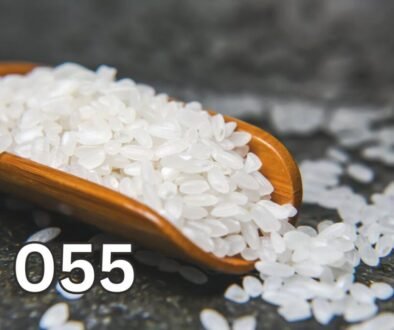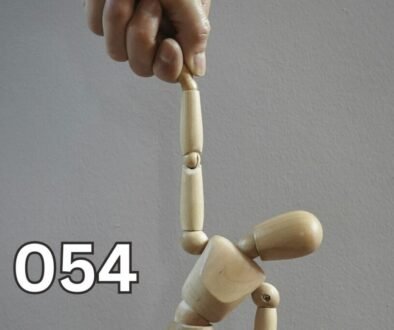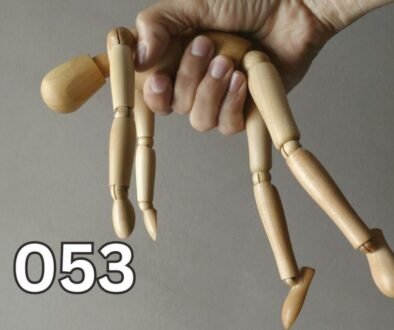The Banana Story: The Cavendish Banana Is Dying
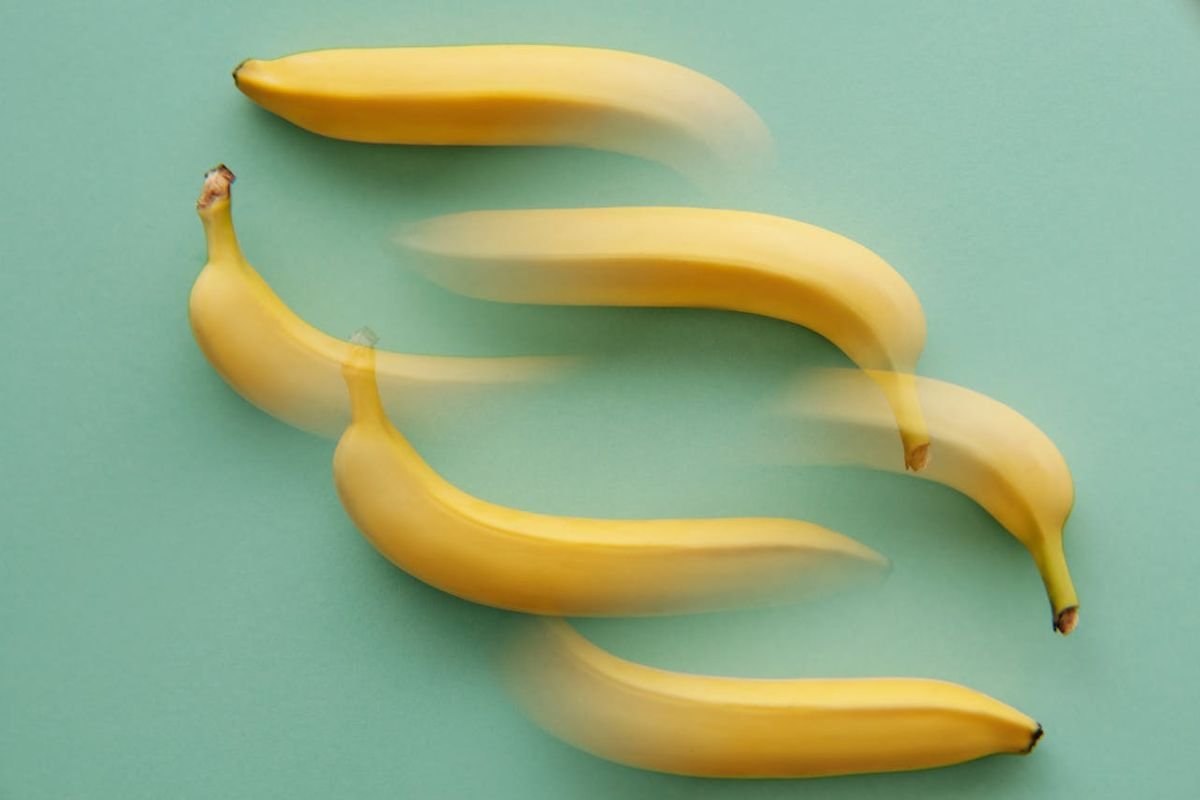
11 FEBRUARY 2025
The Global “Banana Pandemic”
In 2019, Dr. Fernando García-Bastidas, a Colombian-born plant pathologist working in the Netherlands, received distressing photos from a banana farm in Colombia. The images showed banana leaves yellowing and wilting, classic signs of Fusarium Wilt Tropical Race 4 (TR4).
Dr. García knew these symptoms all too well. This fungal disease had already devastated banana crops in Asia and Australia, and now, it had seemingly reached Latin America. He wasted no time. He flew to Colombia and ran tests to confirm his fears. The results were undeniable: TR4 was there.
Without hesitation, he picked up the phone and called Colombia’s agricultural authorities. The moment the official on the other end answered, Dr. García spoke just four chilling words: “The banana pandemic is here.”
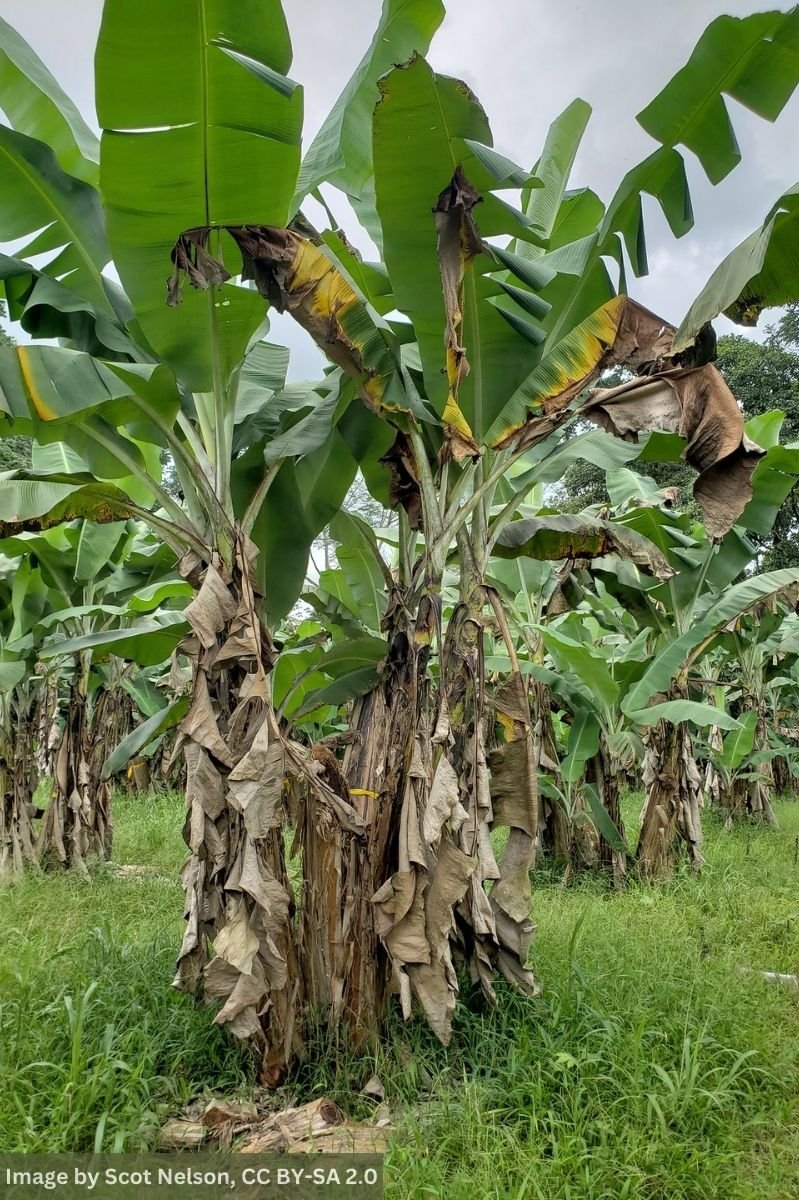
Silence followed. The weight of those words was clear. Farmers, agricultural experts, and government officials all understood the nightmare ahead. But what does this really mean for the rest of the world?
Why the “Banana Pandemic” is a Global Crisis
Why did Dr. García sound the alarm so urgently? What makes this so dire? To understand the gravity of the situation, let’s break it down.
Fusarium Wilt TR4, often called Panama disease, is a lethal fungal infection that attacks banana plants. Caused by the soil-borne fungus Fusarium oxysporum f. sp. cubense, TR4 invades the plant’s roots, cutting off its ability to transport water and nutrients. The result? The plant wilts, dries out, and dies, every single time. There is no cure.
And here’s the worst part: TR4 spores are practically indestructible. No fungicide can eliminate them, and they can linger in the soil for decades. Even if infected banana plants are destroyed and replaced with healthy ones, the fungus remains, dooming each new crop to the same fate. Once TR4 takes hold, there’s no way to reverse the damage.
Can’t Farmers Just Grow Something Else?
A logical question might be: If bananas are doomed, why not just grow another crop? Unfortunately, it’s not that simple.
While TR4 only affects bananas and won’t harm other plants, the real danger lies in its ability to spread. The spores are microscopic, clinging to anything that touches infected soil, workers’ boots, tools, even the wind. A single contaminated shoe can unknowingly carry the fungus to another farm miles away.
That’s why containment is crucial. Once TR4 is detected on a farm, strict biosecurity measures must be enforced immediately. Workers must disinfect their shoes and clothing before entering and after leaving. Equipment must be meticulously cleaned. Even harvested bananas must be carefully washed to prevent accidental contamination.
But despite these efforts, many infected plantations eventually shut down. The cost of containment becomes too high, and once the soil is compromised, the land is useless for growing bananas. And that leads us to an even bigger problem…
The Invisible Invader: How Fusarium Wilt Spreads Undetected

One of the most alarming aspects of Fusarium wilt is how it spreads silently. Unlike diseases that immediately show symptoms, this fungal infection lurks unseen in the soil, often going undetected for months, or even years, before visibly affecting banana plants.
To put it into perspective, think about how difficult it was to control COVID-19 due to its long incubation period. Fusarium wilt functions differently, it doesn’t have a true incubation phase, but its spores can lie dormant in the soil for long stretches of time, spreading unnoticed before the first signs of infection appear.
By the time banana leaves start to yellow, it’s often too late. The soil is already contaminated, and the disease has likely spread to new locations, carried on the boots of farm workers, on uncleaned tools, and even by animals. This hidden transmission makes Fusarium wilt nearly impossible to contain. By the time farmers realise they have a problem, the infection has already taken hold, destroying plants from the inside out by cutting off their water and nutrient supply.
A Ticking Time Bomb: The Hidden Dangers of Fusarium Wilt
Unlike COVID-19, which has an incubation period of up to 14 days, Fusarium wilt can remain dormant in the soil for years. This means a newly infected plantation may appear perfectly healthy for an entire season. Then, suddenly, the following year, the once-thriving banana trees start to wither, their leaves turning yellow as the infection takes its toll.
This prolonged dormancy is what makes Fusarium wilt so dangerous. During that first year, the fungal spores can spread far and wide, completely undetected, hitching a ride on workers’ shoes, farming equipment, and even exported bananas. By the time symptoms appear, the damage is already irreversible.
So, can Fusarium wilt be completely stopped? Unfortunately, the answer is no. The spores are nearly impossible to eliminate, and once they settle into the soil, they can remain active for decades. The worst-case scenario? Scientists warn that if TR4 continues to spread unchecked, the global banana industry may have to be rebuilt from the ground up.
It sounds unthinkable, but this wouldn’t be the first time. Half a century ago, a similar crisis nearly wiped out the banana industry entirely. And history, as they say, has a way of repeating itself…
The Gros Michel Tragedy: A Banana Lost to History
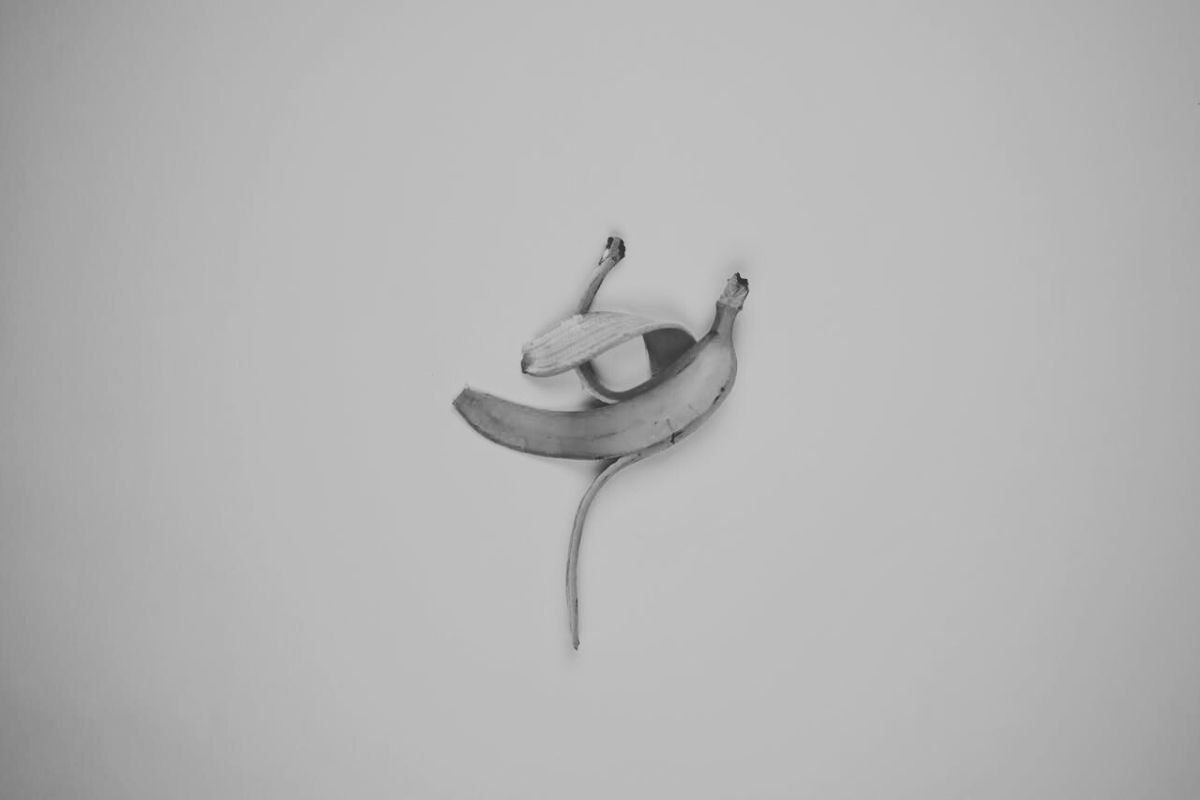
Before the 1950s, the bananas people ate were not the same as the ones we find in grocery stores today. Back then, the world’s favourite banana was the Gros Michel, or Big Mike, a variety beloved for its rich flavour and creamy texture. Many claim that Gros Michel was larger, sweeter, and more flavourful than the bananas we know today, making it a global sensation.
The Banana That Took the World by Storm
How popular was Gros Michel? Imagine a time when bananas were flying off the shelves so fast that fruit vendors couldn’t keep up. In fact, the 1923 song Yes! We Have No Bananas became a smash hit, a century ago!, reflecting just how much people adored this fruit.
With such high demand, most banana plantations, especially in Central and South America, focused almost exclusively on growing Gros Michel to keep up with European and American consumption. It was the undisputed king of bananas.
Built for Global Trade: Why Gros Michel Dominated
What made Gros Michel perfect for international trade? Aside from its delicious taste, it had a built-in advantage: it could be harvested before ripening and would continue to ripen during shipment. This characteristic, known as climacteric ripening, made large-scale banana exports possible.
Bananas spoil quickly, so shipping them long distances was a challenge. But Gros Michel’s thick skin and firm texture made it ideal for transport, it could withstand the long journey overseas without refrigeration. Farmers harvested the bananas while they were still green, allowing them to ripen naturally by the time they reached store shelves. For decades, every banana sold internationally was a Gros Michel.
The Unexpected Fall of a Banana Empire
No one could have predicted that Gros Michel, once the world’s most popular banana, would vanish from commercial plantations by the 1950s. But that’s exactly what happened.
The culprit? Panama disease, caused by the Fusarium fungus (Tropical Race 1, TR1). As discussed earlier, Fusarium is nearly impossible to remove from infected soil. Once Panama disease took hold, farmers found it impossible to grow Gros Michel in contaminated areas.
At first, plantation owners tried to fight back. But the fungus spread faster than anyone could contain it, wiping out banana farms across Central America. For decades, the industry scrambled to save Gros Michel, but in the end, the battle was lost. By the mid-20th century, the world’s favourite banana had all but disappeared.
A Desperate Search: Finding a Banana to Save the Industry
With Gros Michel wiped out, the world faced a looming banana shortage. For consumers, this meant an inconvenience. But for banana-exporting nations, it was an economic disaster. Entire economies depended on banana exports, without them, farmers lost their livelihoods, industries crumbled, and entire communities suffered.
The race was on to find a replacement variety, one that could survive Panama disease and meet the demands of global trade. After extensive research and testing, scientists finally found an alternative: the Cavendish banana.
Little did they know, history was about to repeat itself.
The Cavendish Banana: A Historic Lifesaver

When you hear “Cavendish,” you might think of Henry Cavendish, the British scientist famous for discovering hydrogen. But the Cavendish banana? It has nothing to do with him. Instead, it’s linked to his aristocratic family, the Cavendishes, particularly the Dukes of Devonshire in England.
From a Greenhouse to Global Fame: The Cavendish Banana’s Origins
In the early 19th century, bananas were a rare and exotic fruit in Europe, far from the supermarket staple they are today. That changed thanks to William Cavendish, the 6th Duke of Devonshire, an avid horticulturist with a passion for collecting unusual plants.
In 1834, a friend of the Duke, Reverend John Williams, brought back banana plants from Mauritius. These plants, unlike anything commonly seen in Europe at the time, were gifted to the Duke and quickly became a prized addition to Chatsworth House, his grand estate.
However, England’s cold climate wasn’t exactly banana-friendly. To keep them alive, the Duke cultivated them in the Great Conservatory, a massive greenhouse designed specifically for tropical plants. Under his careful attention, the banana plants thrived. Over time, this particular variety, originally a curiosity in an aristocrat’s collection, was propagated and distributed worldwide. And so, the Cavendish banana was born, named in honour of the Duke’s family.
The Banana That Saved an Industry
Little did the Duke know that his gardening hobby would one day rescue the global banana industry.
A century later, in the 1950s, the once-dominant Gros Michel banana was on the brink of extinction, wiped out by Fusarium Wilt TR1 (Panama Disease). Banana producers scrambled to find a replacement, and their search led them back to the Cavendish, the very banana that had been cultivated at Chatsworth House decades earlier.
Although the Cavendish was smaller and less fragrant than Gros Michel, it had one critical advantage: it was resistant to the TR1 strain of Fusarium wilt. This meant that banana plantations, many of which had been devastated by the disease, could switch to Cavendish bananas without having to clear massive new areas of land. The industry rebounded, and before long, plantations across Asia, the Americas, and Africa were growing Cavendish bananas on a massive scale.
Today, nearly every banana sold worldwide is a Cavendish. So, if you enjoy bananas, you have the Duke of Devonshire to thank for their survival.
And perhaps there’s another lesson in this story: you never know where a simple hobby might lead. In the Duke’s case, his love for gardening ended up leaving a lasting legacy on the world’s food supply.
Dole: How a Banana Giant Was Born
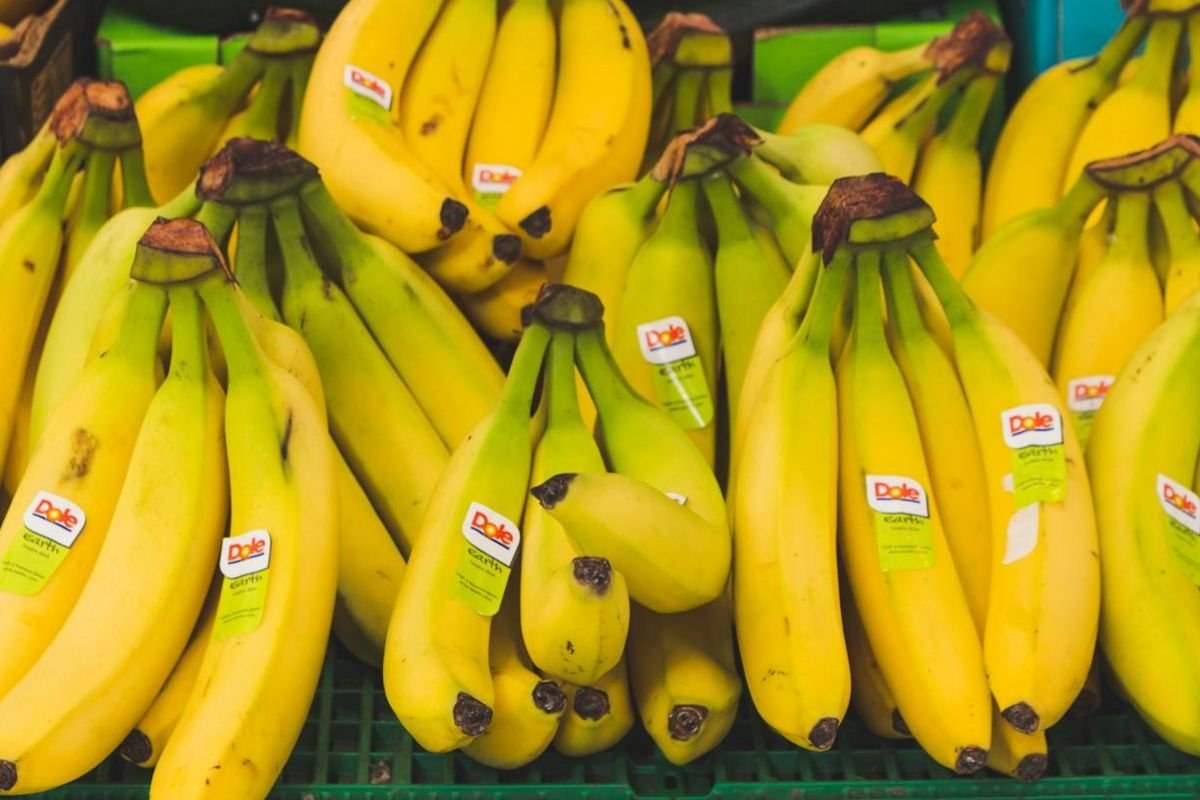
The Cavendish banana didn’t just save the industry, it also created a new global powerhouse: Dole Food Company. Today, Dole’s logo is instantly recognisable, proudly stamped on bananas, pineapples, and countless other fruits around the world.
But before the 1950s, Dole wasn’t the king of bananas, United Fruit was. Known today as Chiquita, United Fruit dominated the global banana trade, thanks to the immense popularity of the Gros Michel banana. Their massive plantations stretched across Latin America, feeding a seemingly endless demand for the fruit.
Then came Panama disease.
How Dole Outsmarted United Fruit
When Fusarium Wilt TR1 (Panama disease) devastated Gros Michel plantations, United Fruit, once untouchable, was left reeling. The company’s vast banana empire, built on a single variety, began to crumble.
Meanwhile, Dole (then known as Standard Fruit Company) saw an opportunity. Unlike United Fruit, which hesitated, Dole acted fast, shifting its plantations to the disease-resistant Cavendish banana. This quick decision allowed Dole to keep exporting bananas while United Fruit scrambled to adapt.
By the time United Fruit finally made the switch, it was too late. Dole had already cemented itself as a major player in the banana trade. Over the following decades, Dole expanded its reach, surpassing its long-time rival and becoming the world’s largest fruit company.
United Fruit’s mistake? It clung to the past. Dole embraced the future.
A New Threat: The Return of Panama Disease
Some readers might wonder: Isn’t the Cavendish banana resistant to Panama disease? The answer is complicated.
The Cavendish was resistant to the first strain of the disease (TR1), which wiped out Gros Michel. But in the 1990s, a new, even deadlier strain emerged: TR4 (Tropical Race 4).
TR4: The Banana Killer
First detected in Taiwan, TR4 proved far more aggressive than its predecessor. It spread relentlessly across Asia, Africa, and the Middle East, devastating plantations along the way.
For decades, Latin America, the world’s largest banana-producing region, remained TR4-free, protected by strict biosecurity measures. But in 2019, the worst-case scenario became reality.
A banana plantation in Colombia tested positive for TR4. The discovery sent shockwaves through the industry. Scientists, including Dr. Garcia, confirmed what everyone feared: TR4 had reached Latin America.
The last major stronghold of the Cavendish was officially under threat.
Can We Save the Cavendish?
If left unchecked, TR4 could do to the Cavendish what TR1 did to Gros Michel, wipe it out. But there’s a key difference: Cavendish bananas have held on far longer than Gros Michel did.
Why?
Not because they’re stronger, genetically, both varieties are equally vulnerable. The reason Cavendish bananas have survived for decades after TR4’s emergence is better containment strategies and biosecurity measures developed after the first Panama disease crisis.
However, this doesn’t mean the Cavendish is safe. It just means the collapse is happening more slowly.
If TR4 continues to spread unchecked, the fate of the world’s favourite banana may already be sealed.
Why Bananas Don’t Have Seeds (and Why That’s a Problem)
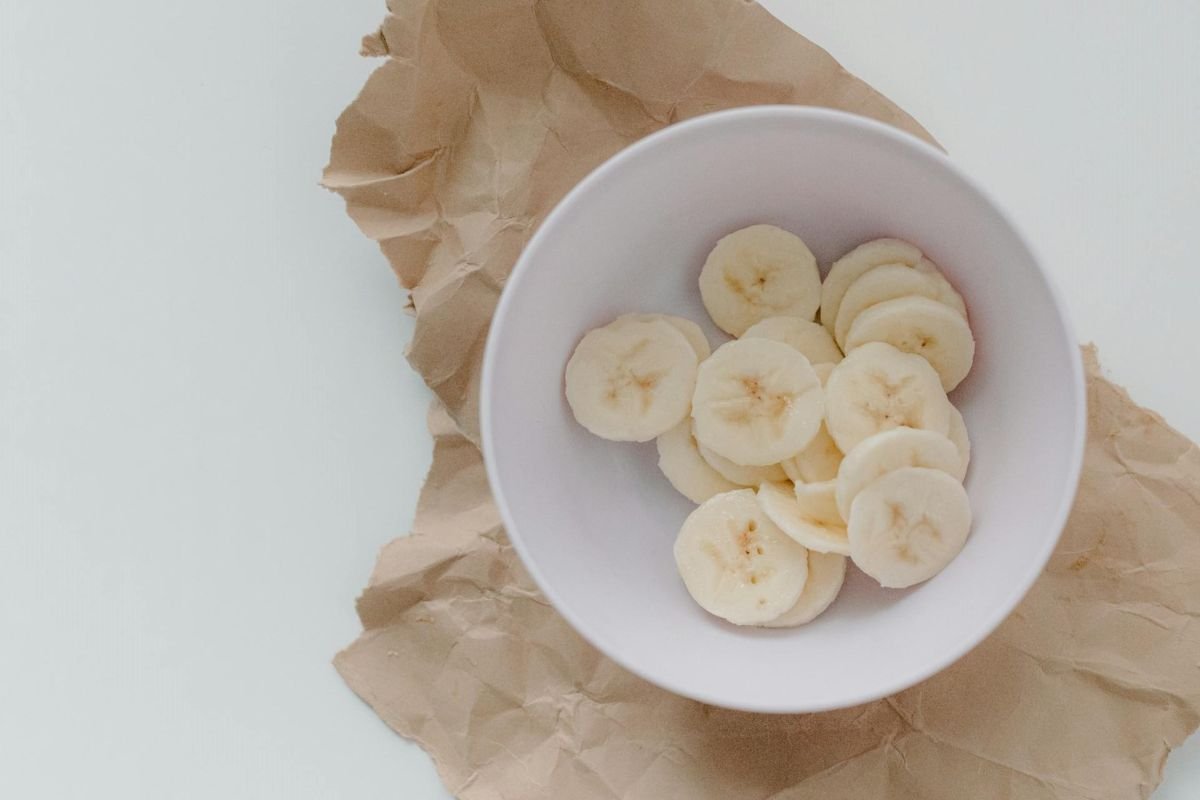
If you’ve ever eaten a banana, you might have noticed something unusual: no seeds. Those tiny black dots inside a banana? They’re nothing more than undeveloped, sterile remnants. But if bananas don’t have seeds, how do they reproduce? To answer that, we have to go back thousands of years, to the very origins of the banana.
The Wild Side of Bananas: A History of Domestication
Bananas weren’t always the smooth, seedless fruit we enjoy today. In fact, their wild ancestors were filled with large, tough seeds that made eating them a challenge. Some of the earliest domestication efforts, dating back 7,000 to 10,000 years ago in Southeast Asia and Papua New Guinea, involved selecting bananas with smaller, softer seeds, eventually leading to varieties that produced little to no seeds at all.
Wild bananas are diploid, meaning they have two sets of chromosomes, allowing them to reproduce naturally through seeds. However, through generations of selective cultivation, early farmers unknowingly encouraged a genetic mutation that resulted in a new type of banana: the triploid banana, which has three sets of chromosomes instead of two.
Bananas Are Like Mules: A Genetic Dead End
So, what’s the big deal with triploidy? Simply put, it disrupts the reproductive process. To successfully reproduce through seeds, plants (like animals) need even chromosome pairs to undergo meiosis, the process that creates fertile offspring.
This is where bananas and mules share a strange similarity.
A mule is the offspring of a horse (64 chromosomes) and a donkey (62 chromosomes), resulting in an uneven 63 chromosomes. This mismatch prevents proper chromosome pairing, making mules sterile.
Bananas face the same problem. Their triploid genetic structure prevents meiosis, meaning they can’t produce viable seeds. While this makes bananas smoother and easier to eat, it also means they can’t reproduce naturally.
The Perks and Pitfalls of Seedless Bananas
The Cavendish and Gros Michel bananas, two of the most famous cultivated varieties, are both triploid and seedless. This seedlessness is part of what makes bananas so appealing: no annoying pits, no tough seeds to spit out, just smooth, melt-in-your-mouth fruit.
But while being seedless makes bananas a convenient snack, it also comes with a major downside: bananas can’t reproduce on their own.
So, if bananas don’t have seeds… how do we keep growing them?
How Bananas Grow Without Seeds
Banana plants might look like trees, but they’re actually herbaceous perennials, meaning they don’t have woody trunks like apple or pear trees. Instead, their soft, flexible stalks emerge from an underground root system called a corm. And since bananas don’t produce seeds, they have a different trick up their sleeve to keep growing: cloning themselves.
Suckers: Nature’s Copy-Paste Method
Instead of sprouting from seeds, new banana plants emerge from “suckers”, small offshoots that grow from the corm after the main plant has fruited. These suckers develop into full-sized banana plants, producing fruit identical to the original. This asexual propagation method allows banana farmers to cultivate generation after generation of genetically identical bananas, all without planting a single seed.
The Clone Army of the Banana World
This isn’t just a banana trick. In nature, some animals also reproduce asexually. One of the most fascinating examples is the marbled crayfish, a freshwater crustacean that can clone itself. Every marbled crayfish is an exact genetic copy of its parent, just like every Cavendish banana is a copy of the plant that came before it.
At first glance, this might sound like an evolutionary superpower, but there’s a catch.
The Double-Edged Sword of Cloning
Cloning has one huge advantage: consistency. Since every banana plant is genetically identical, farmers can produce fruit with the same taste, texture, and size, year after year. That’s why a banana bought in New York tastes the same as one bought in Tokyo. Consumers love that reliability, and the banana industry depends on it.
But there’s a major downside: genetic uniformity is also a banana’s greatest weakness.
Why Bananas Are So Vulnerable to Disease
Because every Cavendish banana is an exact clone, they all share the same strengths, but also the same weaknesses. If a disease can infect one banana plant, it can infect all of them.
Other fruits, like apples, have thousands of genetically distinct varieties. If one variety is vulnerable to disease, others may survive. That’s why we don’t see apple orchards getting wiped out overnight. Bananas don’t have that luxury.
This is exactly what happened to the Gros Michel banana, which was wiped out by Panama disease TR1 in the mid-1900s. And now, history is repeating itself with Cavendish bananas facing the deadly TR4 strain.
A Looming Crisis: The Cost of Genetic Uniformity
Without genetic diversity, bananas are stuck in an evolutionary dead-end. Unlike sexually reproducing plants, they can’t develop natural resistance to emerging threats. A single mutation in a disease-causing fungus could wipe out entire banana plantations worldwide.
This isn’t just a banana problem. The marbled crayfish, despite thriving now, faces the same risk, since all individuals are genetic clones, a single environmental shift or disease outbreak could wipe them out.
For bananas, the question isn’t if another crisis will come, it’s when.
Can the Cavendish Banana Be Saved?
The Cavendish banana is at a crossroads. With Tropical Race 4 (TR4) steadily spreading across the globe, the very future of the world’s most popular banana hangs in the balance. The situation is eerily reminiscent of the Gros Michel’s downfall in the mid-20th century, and once again, scientists and farmers are racing against time to find a solution.
So, what can be done? Two major strategies are on the table, each with its own challenges and uncertainties.
Option 1: Finding a Natural Successor
The simplest solution would be to find another banana variety that is naturally resistant to TR4, much like how the Cavendish replaced Gros Michel decades ago. But there’s a catch: taste and texture matter.
Consumers expect bananas to be sweet, creamy, and easy to peel, a combination not easily found in nature. Many wild bananas are either too starchy, filled with hard, inedible seeds, or simply don’t match the Cavendish’s soft, snackable appeal.
So far, no perfect replacement has emerged. Some promising varieties exist, but none tick all the boxes of disease resistance, taste, and large-scale commercial viability. The longer it takes to find one, the more urgent the crisis becomes.
Option 2: A High-Tech Rescue – Genetic Modification
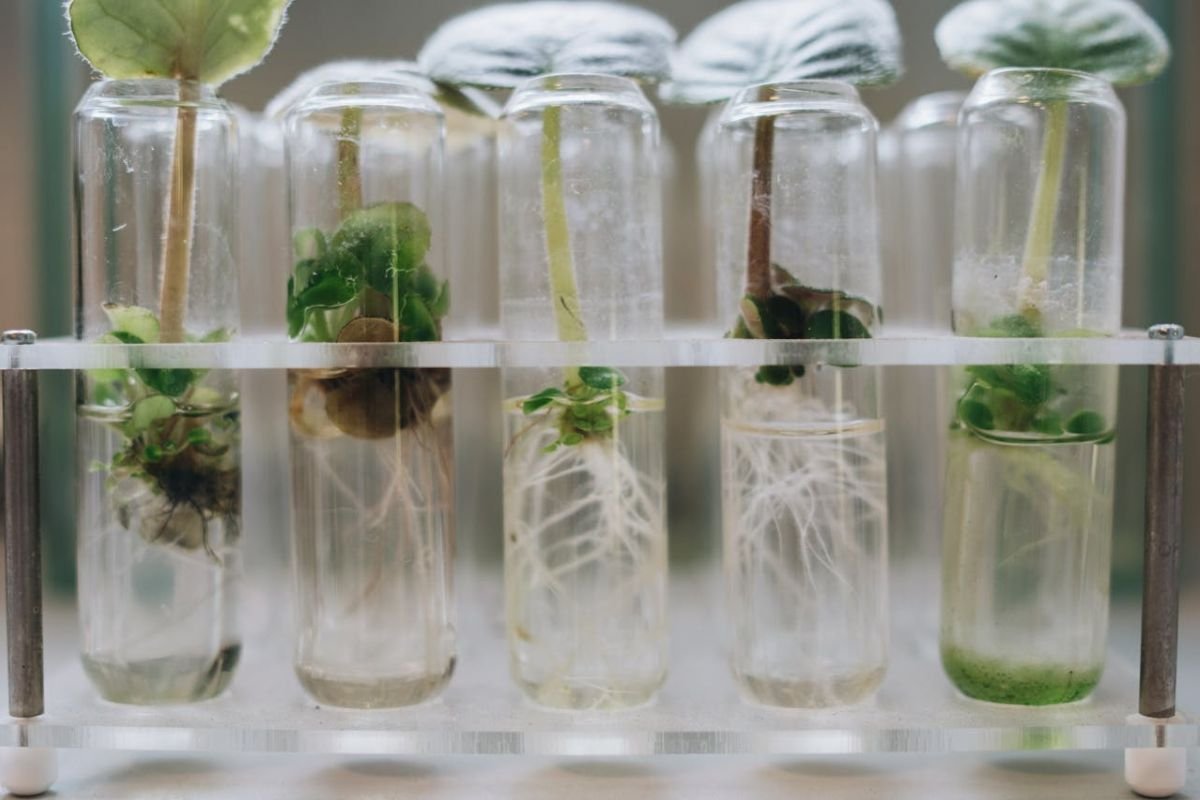
If nature doesn’t provide a solution, science might. Genetic modification offers the potential to engineer resistance directly into the Cavendish banana, making it immune to TR4 without changing its beloved characteristics. Scientists are exploring two main approaches:
1. Genome Editing (CRISPR & Gene Insertion)
Using cutting-edge techniques like CRISPR, researchers could insert genes from resistant banana species (or even other plants) into the Cavendish, giving it built-in immunity to TR4. This method is precise, fast, and potentially life-saving for the banana industry.
2. Induced Mutation & Selective Breeding
Another strategy is to speed up evolution artificially. By exposing banana plants to radiation or chemicals, scientists can trigger random mutations. Any plant that survives in TR4-contaminated soil could be selectively bred into a naturally resistant variety.
Both genetic approaches show promise, but they come with hurdles:
- Scientific Challenges – Creating and testing a resistant Cavendish takes time.
- Regulatory Hurdles – Many countries have strict laws on genetically modified (GM) foods.
- Consumer Skepticism – Will people accept a genetically modified banana on their supermarket shelves?
A Race Against Time
While scientists work on solutions, TR4 continues to spread. The idea of a genetically modified banana might still be controversial, but if TR4 reaches a tipping point, wiping out entire plantations, consumers may have no choice but to embrace the alternative.
The fate of the banana as we know it now rests in the hands of science, consumers, and time.
Who Decides What Bananas You Eat?
If there are hundreds of banana varieties worldwide, each with different flavours, colours, and textures, why do most of us only ever see one or two kinds in grocery stores? The answer has less to do with taste and more to do with business.
Why the Cavendish Dominates
At first glance, it seems like we choose to eat Cavendish bananas simply because they’re the best option. But in reality, this banana’s global dominance isn’t just about consumer preference, it’s about logistics and corporate control.
Banana plantations, largely run by a handful of multinational corporations, prioritise efficiency, shelf life, and transportability over flavour or variety. The Cavendish checks all the right boxes:
- It ripens at just the right speed for international shipping.
- It has a thick peel, making it resistant to bruising.
- It grows in uniform bunches, making harvesting easier.
For major banana exporters, these factors matter more than taste. The result? Supermarket shelves stocked with the most commercially viable banana, rather than the most flavourful or diverse selection.
Limited Choices for Consumers
If you don’t live in a banana-growing country, your banana selection is dictated by corporate decisions. It’s not that exotic, richly flavoured bananas don’t exist,it’s that they aren’t as profitable for large-scale trade.
Meanwhile, in regions where bananas grow naturally, people enjoy a vast array of varieties, some red or purple, some tiny and sweet, others starchy and used for cooking. These bananas don’t fit neatly into global supply chains, so they rarely make it beyond their local markets.
The irony? The world has more banana diversity than ever before, yet most consumers experience less of it than previous generations.
Bananas and the Internet: A Surprising Parallel
Strangely enough, the way corporations control banana availability isn’t so different from how we access information online.
A few decades ago, people got their news and entertainment from a wide range of sources, newspapers, magazines, television, and radio. Editorial teams carefully selected content, offering a broad, balanced view of world events.
But today? Algorithms decide what we see. Just as multinational banana corporations limit which varieties reach supermarkets, tech companies filter and prioritise the information we consume based on what’s most profitable.
- Banana companies grow what sells best.
- Tech companies promote what keeps us clicking.
The result? A world where abundance exists, but choice is artificially limited. Whether it’s bananas or knowledge, what we consume is increasingly shaped not by diversity, but by what’s easiest to distribute and monetise.
Are You Choosing What You See Online – Or Is an Algorithm Choosing for You?

Have you ever searched for something online, maybe a new laptop or a health supplement, only to find your feed suddenly flooded with related ads and recommendations? One video about tablets turns into a never-ending stream of tech content. One search about vitamin D3, and suddenly, every health blog seems to be talking about supplements. Before you know it, the internet starts feeling smaller, as if everything revolves around the same few topics.
But here’s the thing: this isn’t a coincidence.
The Hidden Hand of Algorithms
Modern algorithms don’t just suggest content you might like, they shape what you see altogether. The moment you interact with something online, recommendation systems start feeding you more of the same, reinforcing interests you’ve already shown. It’s all part of an effort to maximise engagement, keeping you scrolling, watching, and clicking for as long as possible.
While this sounds convenient, it also has a narrowing effect. Over time, your exposure to new and diverse content shrinks, creating the illusion that your personalised feed is the whole picture. The reality? There’s an entire hidden world of content, stories, perspectives, and knowledge, that algorithms simply aren’t showing you.
Algorithms and Bananas: A Surprising Parallel
If this sounds familiar, it’s because the banana industry works the same way.
Supermarkets aren’t overflowing with different banana varieties, not because they don’t exist, but because multinational fruit companies focus on the most profitable and easiest-to-transport type: the Cavendish. Just like social media algorithms promote the most engaging content for mass appeal, banana corporations prioritise what’s easiest to grow, ship, and sell.
- Tech companies curate what we see based on profitability.
- Fruit corporations curate what we eat based on profitability.
Both industries limit diversity to maximise efficiency, even though a wider variety exists just beyond our reach.
The 80/20 Rule: Why Efficiency Wins
This strategy aligns with the Pareto Principle (80/20 rule), the idea that 80% of results come from just 20% of inputs. In both content and agriculture, a small selection of high-performing products satisfies most people’s needs.
- For online content: A handful of viral posts dominate what people see.
- For bananas: One variety, the Cavendish, dominates the market.
For the average consumer, this setup works just fine. But for those craving something different, breaking free from the cycle requires intentional effort.
Breaking Free from Algorithmic Bubbles

Breaking the Algorithm (And Expanding Your World)
If we want to break out of these content bubbles, we have to be intentional about seeking out new perspectives. That might mean:
- Actively searching for diverse perspectives and niche content.
- Following sources that aren’t automatically recommended.
- Exploring new food varieties beyond what’s most accessible.
Because whether it’s bananas or ideas, the easiest option isn’t always the best one.
The Power of Books & Magazines: Slow, Thoughtful Knowledge
Before algorithms dictated what we read, people turned to books and magazines, carefully selected sources of knowledge that weren’t designed to maximise engagement, but to inform, challenge, and inspire.
- Books offer deep, well-researched perspectives that digital snippets often lack.
- Magazines & journals provide balanced insights across various topics.
Unlike algorithm-driven content, these sources don’t just feed you what’s popular, they introduce you to ideas you might never have searched for but still find valuable.
Finding Balance with News Aggregators & Independent Sources
If you prefer digital content but want to avoid algorithmic bias, consider news aggregators that present a range of perspectives.
- RSS Feeds (like Feedly) let you hand-pick sources for a customised, unfiltered reading experience.
- Independent news sites often provide a broader range of viewpoints than mainstream platforms.
- Alternative aggregators (like Flipboard or Pocket) allow you to discover niche, high-quality journalism outside of the usual recommendation loops.
- Portal Sites (platforms like Yahoo and MSN) aggregate content from multiple sources, offering a broader view of current events and trends.
Final Thoughts: Rediscovering Diverse Knowledge Sources
By diversifying where we get our news, we reduce tunnel vision and gain a more complete understanding of the world.
The world is far too vast and rich to see it through the narrow lens of algorithms and profit-driven choices. Whether it’s the food we eat or the information we consume, diversity isn’t just a luxury, it’s essential. The more we step beyond what’s conveniently placed in front of us, the more we discover, learn, and grow. In an age of algorithm-driven limitations, curiosity is the antidote.

